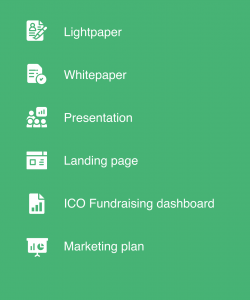What Is The Best Cloud Deployment Model For Your Business?
Содержание
- Advantages And Limitations Of Multi
- Cloud Computing Deployment Models: Which Is Right For You?
- The World Of Cloud Computing
- Advantages And Limitations Of Public Cloud:
- Disadvantages Of Private Cloud
- Deployment Models
- Saas: Releasing The User Experience Of Management Constraints
- Advantages And Limitations Of Community Cloud:
We use Agile software development with DevOps acceleration, to improve the software delivery process and encourage reliable releases that bring exceptional end-user experience. Businesses seeking cost savings and greater control over their data and resources should consider the private cloud. A private cloud setup is linked with your data center and controlled by your IT department. This is also a fantastic delivery approach for development and testing teams, because its simple configuration and deployment make it an excellent choice for test settings.
UK: GE Healthcare and AWS announce first European cloud deployment - Healthcare IT News
UK: GE Healthcare and AWS announce first European cloud deployment.
Posted: Wed, 24 Aug 2022 07:00:00 GMT [source]
In private cloud model, you maintain the data center just like it is done in public cloud model. An abstraction layer is created on top of your physical servers to gain flexibility. New servers can be added to the data center and there is no need to configure them again as they have semi-automatically become a part of the cluster. It is possible to get a private cloud from a public cloud provider. A private cloud is hosted in your data center and maintained by your IT team.
With all these components figured out, you will be able to effectively decide upon which model to opt for. Choosing the best possible deployment options for your business is vital to your company’s success, which means you need to fully understand the advantages and disadvantages of various options. Clients can select the operating system and the VM size but cannot customize orders, reports, or networking. Under-utilization is a cost to your company, and not to your provider, affecting the model’s overall feasibility. The company is the exclusive owner with full control of its service integrations, operations, regulations, and user practices.
Advantages And Limitations Of Multi
One more thing to note is that you don’t have to pick one service model for everything. You can go with different components of various cloud service models based on your architecture. In a hybrid model, companies can use their existing public cloud and also own on-premises systems. This model is extremely useful during a seamless transition between clouds over a period of time. A private cloud built with Intel® technologies provides control and high availability for mission-critical workloads and security.
- Because network connectivity is the basis of the successful access to the cloud services, it is essential that the ISP will offer the required service quality and availability.
- Memory_in_gbs - A model-deployment instance of type VM.Standard.E3.Flex or VM.Standard.E4.Flex allows the memory to be specified with in the range of 6 to 1024 GB.
- Setup Benefits - The protocols and configuration of a community cloud must align with industry standards, allowing customers to work much more efficiently.
- It means that it will be integrated with your data center and managed by your IT team.
- Updates aren't usually frequent, and they’re not always supported.
- Having your own private cloud also lets you control how data is shared and stored.
- One more thing to note is that you don’t have to pick one service model for everything.
The public cloud is also a suitable deployment solution for businesses that require immediate access without paying significant upfront fees. The cloud infrastructure is made available to the general public or a large industry group and is owned https://globalcloudteam.com/ by an organization selling cloud services. The cloud infrastructure is shared by several organizations and supports a specific community that has shared concerns (e.g., mission, security requirements, policy, and compliance considerations).
Cloud Computing Deployment Models: Which Is Right For You?
It is expensive as you need to pay for hardware, software, and training resources. High scalabilityCustomization based on customer requirementsHigh reliability, security and privacy. Red Hat OpenStack, CISCO, DELL, Rackspace, IBM Bluemix Private Cloud, Microsoft Azure Stack, and VMware Private Cloud are some of the examples of a private cloud. Scaling_policy - The scaling policy to apply to each model of the deployment.instance_count - The number of instances for the model deployment.

While you evaluate your cloud deployment options, it’s critical to consider your application architecture as well. If you haven’t already upgraded it and respective cloud deployment options, it’d just be a matter of time before you do. It reduces operational costs and gives companies the freedom to combine cloud models for workflows.
Public cloud services are especially beneficial for workload in the short term like for an event or initial phase for a start-up just as long as it requires. Public cloud is ideally used by businesses that need services like on-demand scaling, social networking, CRM, and storage. It’s more cost-effective than the private cloud-deployment cloud deployment model model since its services are more commoditized. This deployment is usually single-tenant, which means the platform isn’t shared. However, it can have multiple tenants per department within the company. It also provides on-demand data availability, securing reliability, and aid for mission-critical workloads.
The World Of Cloud Computing
Its design style greatly encourages application and data mobility, allowing enterprises to mix and combine options to fit their individual requirements. To support speed and scalability, most cloud hubs feature tens of thousands of servers and storage devices. This provides enterprises with the opportunity to choose a geographic location that brings information closer to the end users.
Intel’s products and software are intended only to be used in applications that do not cause or contribute to a violation of an internationally recognized human right. If you’re looking for the most control over your resources and data, as well as the most cost-efficient solution over the long term, a private cloud is most likely your best choice. However, there are some workloads that simply won’t work in the public cloud—for example, legacy applications that are too difficult or risky to migrate. As such, the private cloud remains a critical part of your cloud strategy. Explore the use cases and benefits of the public cloud, private cloud, and hybrid cloud. Cloud computing service models are also known as cloud delivery models.
Instance_configuration - The model deployment instance configurationinstance_shape_name - The shape used to launch the model deployment instances. Created_by - The OCID of the user who created the model deployment. Memory_in_gbs - A model-deployment instance of type VM.Standard.E3.Flex or VM.Standard.E4.Flex allows the memory to be specified with in the range of 6 to 1024 GB. VM.Standard3.Flex memory range is between 6 and 512 GB and VM.Optimized3.Flex memory range is between 6 and 256 GB. Compartment_id - The OCID of the compartment where you want to create the model deployment.

In short, a multicloud, hybrid cloud approach gives you the best of both the private cloud and public cloud with the flexibility to run workloads where they make the most sense. Having your own private cloud also lets you control how data is shared and stored. This is often the best option if cloud security is a concern, since you can manage data governance, ensure compliance with any regulations, and protect valuable intellectual property. Cloud computing has enormous potential for organizations of all sizes.
Advantages And Limitations Of Public Cloud:
Its configuration and deployment are quick and easy, making it an ideal choice for test environments. This model leverages cloud computing services from multiple cloud providers. A multi-cloud model relies on more than one public cloud provider, but it can also use a hybrid cloud.

Join thousands of your peers and receive our weekly newsletter with the latest news, industry events, customer insights, and market intelligence. Portability is not a concern because the government might have no intention of moving its centralized applications and data. Thanks to its segmented storage, the security protocols are simpler. So if you’re considering these options and more, this blog is for you.
Disadvantages Of Private Cloud
Governments and scientific laboratories mostly incorporate a private cloud. When it comes to customization, the private cloud provides more options that can more specifically meet the needs of a certain enterprise. Companies with specific requirements, such as confidential and sensitive data or the necessity for safe and reliable efficiency, should opt for a private cloud model. Making the right infrastructure decisions for your business isn’t easy. And it all begins with your cloud deployment model, which is one of the most important cloud deployment decisions that you will make. It is ideal for companies wanting to maintain control over their business applications.

In addition, with the hardware getting older, current operating systems might be unable to execute older programs. In the meantime, rivals would have switched to cutting-edge, affordable cloud-based technologies, which allow them to run their businesses and provide a much smoother client experience. Real-time data is provided, allowing for far more precise decision-making. Automating routine manual chores streamlines operations and frees up team members' time for activities they enjoy. It is also perfect for emerging forms of working, like remote and hybrid work, because it can be accessed from anywhere, on any device, at any time.
Nevertheless, you can opt for a record meter and display usage to user groups or various tenants. Blockchain Engineering Create decentralized apps that provide traceability and security of data and transactionsBlockchain Engineering Harness the power of distributed ledger technologies with Simform. We help you integrate technologies and partnerships from every aspect of the blockchain ecosystem to bring you the right combination of technologies and infrastructure. Your cloud setup should always be equipped with security monitoring and auto-remediation mechanisms to avoid both external and internal security threats. A general lack of “cloud readiness” is cited as a major obstacle for enterprise digital transformation goals.
With the public cloud, your business purchases virtualized compute, storage, and networking services over the public internet from a cloud service provider. This can help you speed time to market, scale quickly, and gain the agility to quickly try out new applications and services. A hybrid cloud deployment model is a combination of two or more cloud architectures.
Simform is under review for a CMMI Level 3 company and ISO certification, indicating that our processes, procedures, and methods are standardized and performing at a defined level. Simform pairs human-centric design thinking methodologies with industry-led tech expertise to transform user journeys and create incredible digital experience designs. Switching cloud providers or vendors should be easy , with no expertise needed. Often economic reasons or insufficient service provisioning leads to a decision to change the IT-Service provisioning that might lead to leaving the actual CSP. An intensive preparation makes a change of the CSP safer and more secure. Changes to an operational environment are inevitable as a system undergoes routine maintenance.
Third parties run and own public clouds, which provide computing resources, like servers and storage, over the internet. Public cloud providers own and manage all hardware, software, and other infrastructure. With the public cloud, you can access and manage cloud services via the web. •Public cloudAs the name suggests, this type of cloud deployment model supports all users who want to make use of a computing resource, such as hardware or software on a subscription basis. Most common uses of public clouds are for application development and testing, non-mission-critical tasks such as file-sharing, and e-mail service. Earlier, it was just an extraordinary option but today it has become a necessity.
This allows a group of organizations to access the systems and services. It is a distributed system curated by integrating the benefits of different clouds to address the specific needs of an industry, community, or business. A company with critical data will prefer storing on a private cloud, while less sensitive data can be stored on a public cloud. It means, supposes an organization runs an application on-premises, but due to heavy load, it can burst into the public cloud. Access to a community cloud environment is typically restricted to the members of the community.
